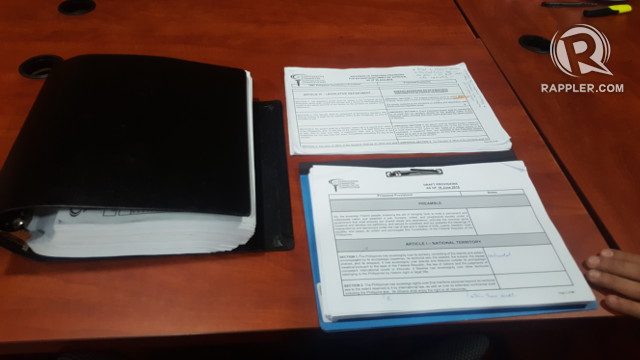SUMMARY
This is AI generated summarization, which may have errors. For context, always refer to the full article.

MANILA, Philippines – Days before submitting their draft constitution to President Rodrigo Duterte, the Consultative Committee (Con-Com) finalized its proposed delineation of exclusive powers of the federal government and the regions.
This distribution of powers is critical to the federal constitution as it shows clearly how powers that used to be with the national government will now be the sole purview of the 18 proposed federated regions.
The exclusive powers for the federal government and regional governments are listed below, based on a presentation made by Con-Com spokesman Ding Generoso on Monday, July 2.
Exclusive powers of regional governments:
- Socioeconomic development planning
- Creation of sources of revenue
- Financial administration and management
- Tourism, investment, and trade development
- Infrastructure, public utilities, and public works
- Economic zones
- Land use and housing
- Justice system
- Local government units
- Business permits and licenses
- Municipal waters
- Indigenous peoples’ rights and welfare
- Culture and language development
- Sports development
- Parks and recreation
Exclusive powers of federal government:
- Defense, security of land, sea, and air territory
- Foreign affairs
- International trade
- Customs and tariffs
- Citizenship, immigration, and naturalization
- National socioeconomic planning
- Monetary policy and federal fiscal policy, banks, currency
- Competition and competition regulation bodies
- Inter-regional infrastructure and public utilities, including telecommunications and broadband networks
- Postal service
- Time regulation, standards of weights and measures
- Promotion and protection of human rights
- Basic education
- Science and technology
- Regulation and licensing of professions
- Social security benefits
- Federal crimes and justice system
- Law and order
- Civil, family, property, and commercial laws, except as may otherwise be provided for in the Constitution
- Prosecution of graft and corruption cases
- Intellectual property
- Elections
Powers not listed above are considered “reserved” powers and will be given to the federal government, said Generoso.
This proposed distribution of powers aims to give regional governments more control over their economy and overall development, given the unique needs, resources, and culture of each region.
“We want regions to look into their strengths and weaknesses, look at the resources they have and plan their economic program,” said Generoso.
18 regions
The Con-Com decided to retain, for the most part, today’s regional configuration when it came up with its number of proposed federated regions.
In total, there will be 18 federated regions to today’s 17. The addition is the proposed “Negrosanon federated region” composed of Negros Occidental, Negros Oriental, and the province of Siquijor. The Negros Island Region was dissolved by Duterte in August 2017, citing lack of funds.
Of the 18, 16 are “symmetrical” regions, meaning they will all have the same types of powers and structure.
But the Bangsamoro and Cordillera regions will be “asymmetrical” regions, or regions with more powers and a different structure owing to their “ethnic or identity-based demands,” said Generoso.
He could not yet provide the list of federated regions.
The proposed federal system means that the national government will no longer directly supervise all provinces, cities, and towns, as it does today.
Instead, the federal government will supervise the 18 regions, while the regional governments will supervise the provinces and cities within their territory.
All regions will be led by a regional governor who will be elected from the regional legislative assembly. This means the public will not directly elect their governor. They, however, will elect their representative to the regional legislative assembly, the pool from which the governor will be chosen.
The winning governor’s running mate will automatically be the regional deputy governor. – Rappler.com
Add a comment
How does this make you feel?
There are no comments yet. Add your comment to start the conversation.